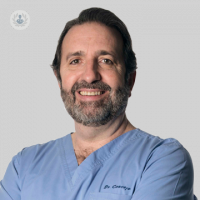Dental Implants: new computer-guided treatment
Written by:Medicine and dentistry have experienced great advances in recent years. An example is implantology computer guided minimally invasive. This technique involves placing dental implants without making any cuts in the gingiva and therefore virtually pain or inflammation, as there are no visible injuries.
 To perform this technique is necessary to apply a scan of the jaw of the patient. The images obtained from the scanner are fed into a computer and through a sophisticated three-dimensional planning program can be displayed on the screen three-dimensional reconstruction actual size of the bones of the face.
To perform this technique is necessary to apply a scan of the jaw of the patient. The images obtained from the scanner are fed into a computer and through a sophisticated three-dimensional planning program can be displayed on the screen three-dimensional reconstruction actual size of the bones of the face.
Once the image on the computer the program can "operate" mock patient. That is you can carefully choose which are the best places to place implants. Finally, a surgical template we call "guide" that will allow very accurately copy the planning done is requested via Internet. This guide fits perfectly into the patient's gums and through it the implants are placed. It is a simple, quick and reliable technique.
Advantages of computer - guided surgery
The advantages for the patient are those derived from not having to make cuts, ie, having no wounds virtually no pain or inflammation so the postoperative period is very comfortable and can lead a perfectly normal life from the first day of the intervention.
But undoubtedly the most important advantage is the safety of the implants were made with a very precise system that guarantees its perfect positioning in the most suitable place.


